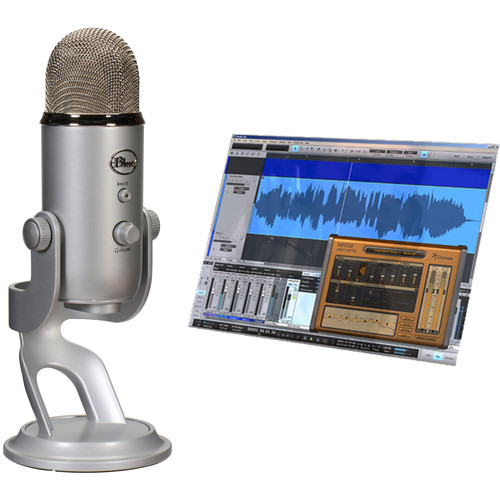

Additional equipment is required to use them with a computer – your audio interface or pre-amp.They will pick up on unwanted plosive and vibration noises and require a pop-shield.You can capture the highest quality of sound using one of these mics, especially the subtleties of the human voice.These mics have a very detailed response, as well as lively sounding upper frequencies.What are the pros and cons of Large Diaphragm Condenser Voice over Mics? Not recommended for studio voice recording.They do not capture the subtleties needed for dialogue recording.They require additional equipment to use them with a computer.


Voiceover settings on a yeti blue microphone nicecast professional#
Most USB mic’s that we’ve tested do not come up to par for professional voice recording. If your ultimate goal is to record the best-sounding voice-over possible, you’re going to need to use a different kind of microphone.Most USB microphones are dependent on a computer for operation, so they’re not as versatile as regular microphones.While it’s possible for a computer to recognize more than one USB microphone at a time, setting it up can be potentially difficult.You can record directly into a computer without the need for additional equipment.A USB microphone connects to a computer through a standard USB port.Using phantom power isn’t complicated, and you shouldn’t be intimidated by it. This electrical power is called “phantom power.” It’s a feature that’s commonly found on computer audio interfaces. Phantom power mics need a little electrical power to work to convert the tiny signals picked up by the condenser into something usable by an audio interface or pre-amp. Large Diaphragm Condenser Microphone: these mics are often used in studios to record voiceovers and have very detailed and lively sounding middle and upper frequencies.They have a warm sound and do not have a high level of detail in the upper frequencies. Dynamic Microphone: these are used for radio broadcasting.

It’s ideal for low-budget podcasting and entry-level voice-over work. USB Microphones: this type of mic plugs directly into your computer’s USB port and captures above-average sound.The first thing to understand is the different types of microphones used in voice work. The Best Microphone For Voice Over – The Types of Voiceover Mics An Audio Interface to connect your mic to your computer.Pop filters: the pop filter reduces the plosive and sibilant sounds that the mouth makes (“P” sounds pop and “S” sounds hiss).Shock Mount: the shock mount suspends the microphone and helps reduce unwanted vibrations and rumbling.Microphone Stand: having a mic stand improves your recordings by reducing movement and knocks so you get a better quality recording.Headphones: you need to be able to hear yourself without interfering with the microphone (feedback), so headphones are essential.The quality of your microphone will have a large impact on the overall quality of your recordings. Voiceover Microphone: a microphone is required to capture the sound of your voice.If you are totally new to voiceover you need to determine first if you have a voice that is suitable for the voiceover industry. This setup gives you a good basic start to recording your voice and producing showreels. The reason for including this is to help you put together a budget that is right for you. The list below is just a quick guide to help you understand what you need to record a good voiceover. In this review, we cover a range of voiceover microphones that are suitable for beginners, intermediates and advanced voiceover artists. This Gravy For The Brain post reviews to find the best microphone for voice over work based on different budgets. Corporate And E-Learning Voiceover Made Simple.Start Getting Cast On Voiceover Job Sites.Beginner’s Guide To Working As A Voice Artist.


 0 kommentar(er)
0 kommentar(er)
